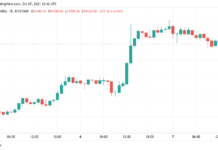The Bank for International Settlements (BIS) recently conducted a survey of central banks worldwide and found that a staggering 94% of them are actively exploring the development of central bank digital currencies (CBDCs). This marks a significant increase in experiments and pilots, particularly in the realm of wholesale CBDCs.
The survey, detailed in a report titled “Embracing Diversity, Advancing Together,” highlighted the diverse approaches central banks are taking towards CBDC implementation and design. Central banks are driven by various motivations, including the need to uphold the role of central bank money in the face of privately issued digital currencies, as well as the desire to improve domestic payment efficiency, promote financial inclusion, and enhance cross-border payment systems.
One of the key findings of the survey was the growing momentum behind wholesale CBDC projects, especially in advanced economies. In fact, central banks are now more likely to issue a wholesale CBDC in the next six years than a retail CBDC. Stakeholder engagement is being prioritized to fine-tune the design of wholesale CBDCs, focusing on features like interoperability and programmability.
When it comes to retail CBDCs, central banks are considering incorporating features such as holding limits, interoperability with existing payment systems, offline transaction capabilities, and zero remuneration. Interestingly, there are differences in design preferences between advanced economies and emerging markets, with the latter showing a stronger inclination towards distributed ledger technology (DLT) and transaction limits.
The survey also delved into the use of stablecoins and other digital assets, revealing that stablecoins are predominantly utilized within the crypto ecosystem for trading and decentralized finance (DeFi) platforms. Despite the significant growth in the stablecoin market capitalization, these fiat-pegged tokens make up only a small portion of the overall crypto market and are rarely used for mainstream payments.
Central banks noted that stablecoins are primarily used by niche groups for remittances and retail payments, rather than by the broader public. For instance, stablecoins account for approximately 5% of remittances to Mexico. Despite their limited use, concerns remain about the potential for stablecoins to disrupt financial stability and payment systems, leading to regulatory efforts to protect investors and consumers, ensure financial stability, and combat illicit activities.
Overall, the survey conducted by the BIS sheds light on the increasing interest and efforts among major central banks in the development of CBDCs, particularly in the realm of wholesale applications. As central banks continue to explore and experiment with CBDCs, global cooperation will be crucial to ensure the safety and efficiency of the payment system amidst varying approaches and paces of adoption across different jurisdictions.














